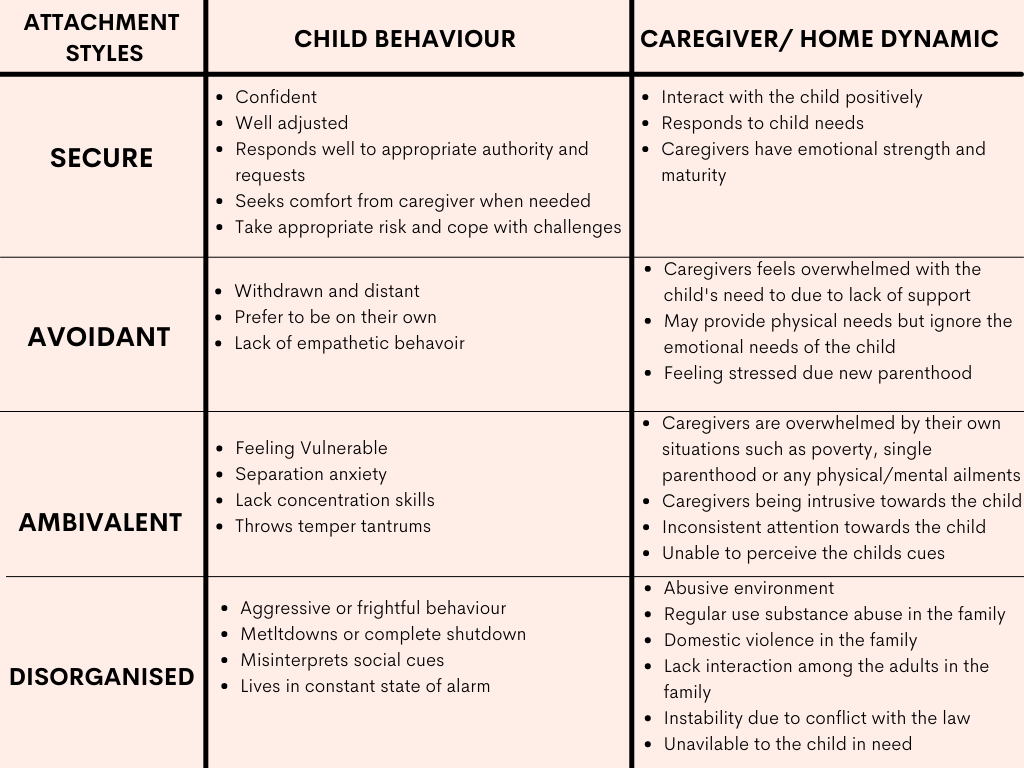“There is no such thing as a baby; there is a baby and someone”. - Donald Winnicott (1964)
If we think of the baby’s brain as a blank book, everything they experience is written into the pages. Baby’s relationship with the parent or carer is the author of the book. Over the years as the baby grows, the experiences they have fill the chapters of the book and mould the person they will become both socially and mentally (Ayre and Krishnamoorthy, 2020).
This is what happened to us too. Our early bonds with our mother (or other caregiver) and the family environment shape our brain and our mental resilience in our adult life.
What is Attachment Theory?
If the early bond with the primary caregiver was consistent and comforting, the foundation is secure and strong. This is the Attachment theory in a nutshell.
It is within this primary caregiving relationship that the child makes sense of the world and their place in it (Perry, 2009). It is here that they build a sense of self- worth, trust in others, the capacity to manage emotions and solve problems. You can then have a foundation for an adulthood that is resilient and confident.
When the relationship is one of fear and abuse, the child will most commonly develop poor self-worth, thoughts of shame and being unlovable (Tobin, 2016). Poor resilience and re-victimisation in later years is often possible in this context.
Foundations of the Theory
John Bowlby (1958) is the founder of Attachment theory. Ainsworth, a colleague of Bowlby, developed this idea further and laid out the following categories (or styles) of attachment relationships between the baby and the caregiver.
Secure
Insecure avoidant
Insecure ambivalent
Disorganised
Different categories

Maternal and Infant Mental Health
Attachment style develops across the first three years of life (Breidenstine, Bailey, Zeanah & Larrieu, 2011). For secure attachment to happen, the baby’s mother’s mental health needs to be addressed. Culturally relevant and modern practices for bonding with the child are important. More on these aspects of maternal and infant mental health in a future newsletter.
As students (formal and informal) and practitioners of psychology, we know the role our families of origin play in how we respond to life, stress and difficult situations. Attachment theory furthers that self-knowledge. It also helps us to look at children/adolescents with “problem” behaviour in a sensitive and useful way.
Curious about your attachment style? Try these questionnaires!!
How can I help children exhibiting troubled behaviour?
In their book “Trauma Informed Behaviour Support - A Practical Guide to Developing Resilient Learners”, Dr Kay Ayre and Dr Govind Krishnamoorthy help us to understand children’s behaviour through the lens of trauma and attachment. This framework could be particularly helpful for educators, therapists and parents - not only for children with trauma but for any child.
If all this sounds complex, Dr Ayre and Dr Krishnamoorthy say: “Remember that it is not our place to diagnose but to understand. Regardless of the type of attachment difficulty a child may have, they all need:
Safety
A caring adult who will be there
Emotional support
Understanding
(non-judgemental) Behaviour support
Routines and consistency”

 THUNAI
THUNAI